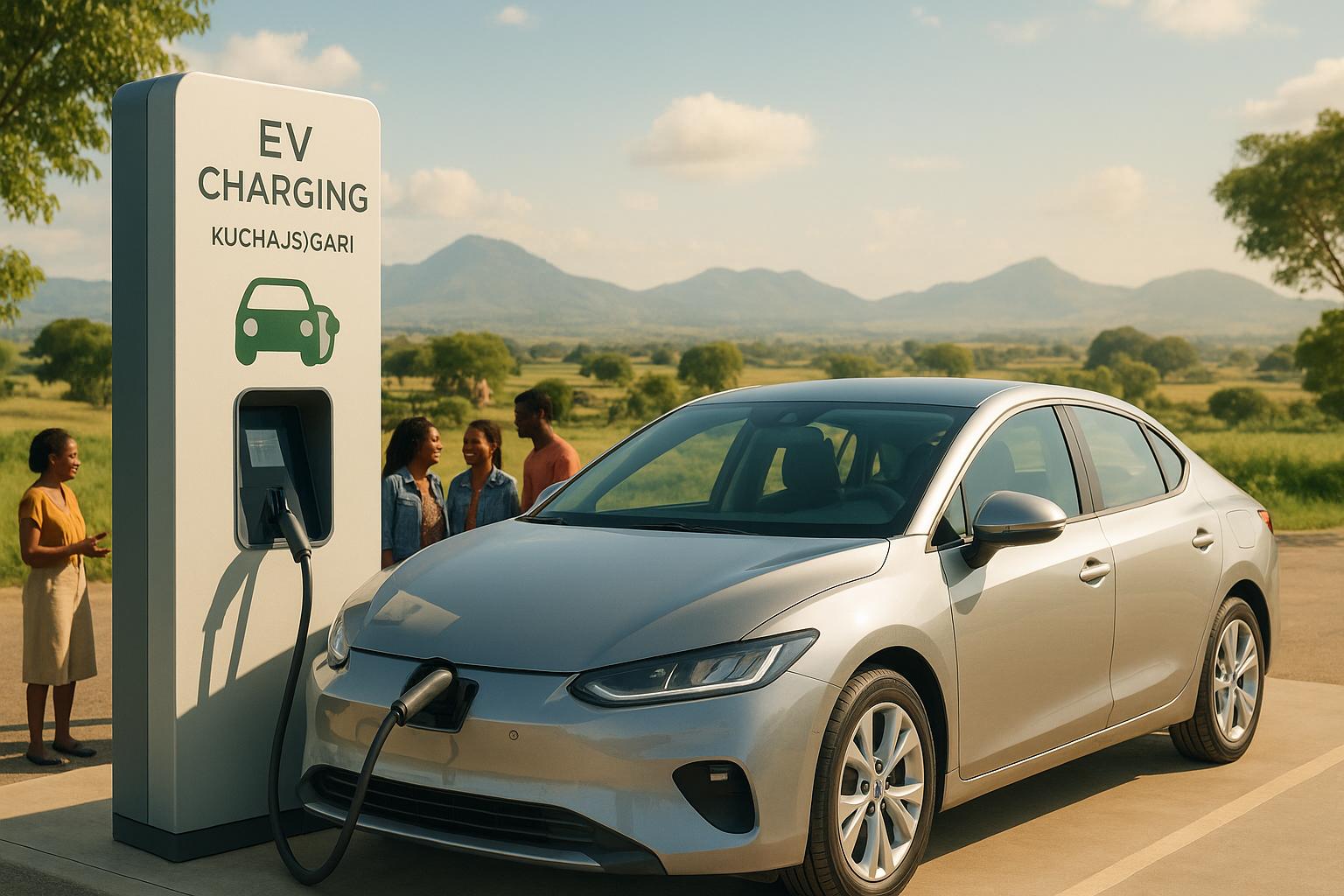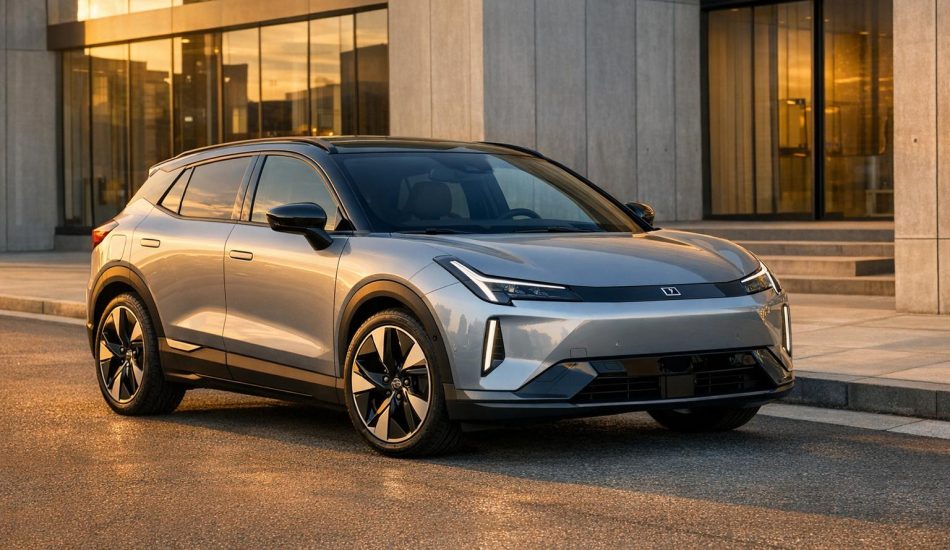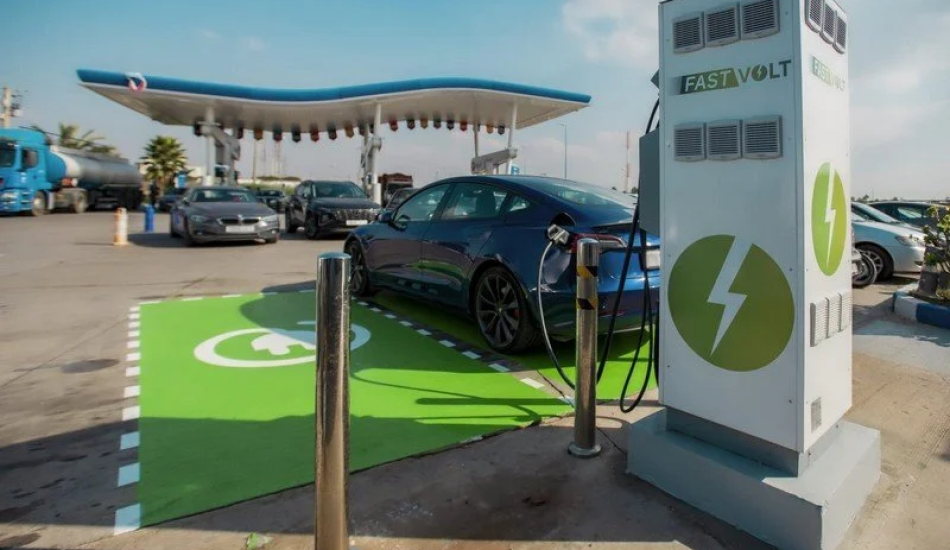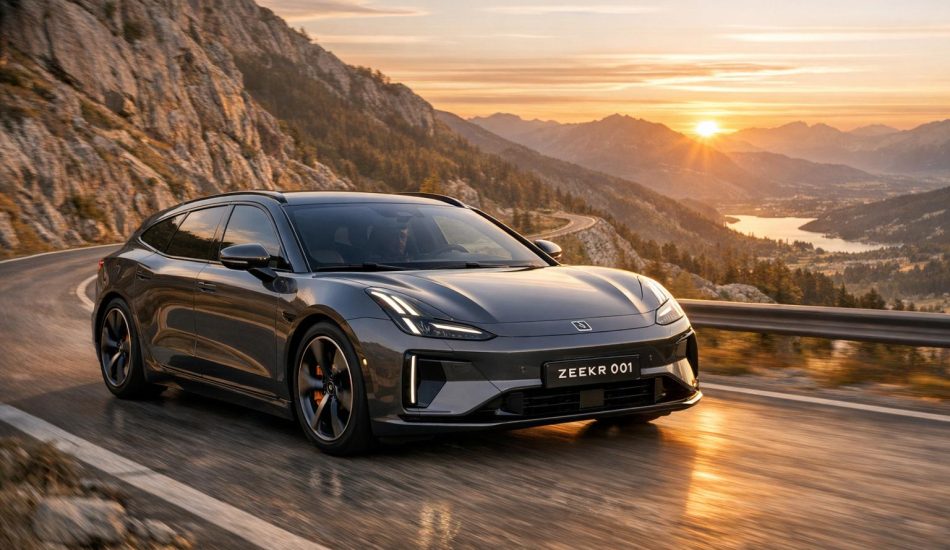
East Africa is racing to unify electric vehicle (EV) standards as fragmented regulations slow progress in a rapidly growing market. Here’s why it matters:
- Market Growth: Africa’s automotive industry could reach $42.06 billion by 2027, with EV adoption accelerating. Kenya, for instance, saw EV registrations jump from 65 in 2018 to 4,047 in 2023.
- Challenges: Inconsistent tax systems, import codes, and charging standards create barriers. For example, an EV bought in one country may not work in a neighboring nation.
- Opportunities: Africa holds 30% of global cobalt, lithium, and copper reserves – key materials for EV batteries. Unified standards could unlock this potential, growing the East African EV market from $12.4 billion in 2021 to $22.3 billion by 2027.
- Climate Goals: Transport emissions in Africa rise by 7% annually. Coordinated policies could reduce emissions and boost renewable energy use.
Key efforts include Ethiopia’s ban on combustion vehicles, Kenya’s reduced EV taxes, and Rwanda’s push for electric motorcycles. Regional initiatives, like the Eastern Africa Power Pool‘s energy infrastructure, aim to support EV adoption. Collaboration between governments, manufacturers, and organizations is crucial to building a connected, efficient EV ecosystem.
Unified standards promise smoother cross-border mobility, reduced costs, and faster infrastructure development, positioning East Africa as a growing player in the global EV market.
Energy Access & DC Equipment Standards with Anne Wacera Wambugu Part 2 of 2 |#21
Government Policies and Regional Programs
East African governments are stepping up efforts to streamline their approach to electric vehicle (EV) adoption. These initiatives span individual national policies and collaborative regional programs aimed at creating consistent standards across borders.
National Policies Supporting EV Growth
Ethiopia has taken a bold lead in the region’s EV push. In January 2024, the country banned the import of combustion engine vehicles, signaling a strong commitment to cleaner transportation. The government also supports local EV assembly and public procurement, as demonstrated by Addis Ababa’s purchase of 110 electric buses in 2022. By mid-2024, Ethiopia had over 30,000 EVs on its roads, with an ambitious target of reaching 150,000 by 2032.
Kenya, on the other hand, has opted for a more gradual approach. The country halved the EV excise duty from 20% to 10% and introduced a special electricity tariff for EVs – 8 KES ($0.06) during off-peak hours and 16 KES ($0.12) during peak times. These measures spurred a 295.9% increase in EV registrations, jumping from 1,059 units in December 2023 to 4,193 by the end of 2024. Kenya is also investing in infrastructure, with plans to establish 1,000 EV charging stations by 2027 and a goal to have electric vehicles make up 5% of all new vehicle registrations by 2030. Additionally, the National Climate Change Action Plan 2018–2022 highlighted the potential to cut 60% of emissions from two-wheelers by transitioning to electric motorcycles.
Rwanda has focused on targeted, impactful measures. In Kigali, officials have stopped approving petrol-powered motorcycle taxis, registering only electric models to improve air quality. The government offers tax exemptions for hybrid and electric vehicles and their spare parts. Rwanda was the first in the region to submit its second Nationally Determined Contribution (NDC) in May 2020, incorporating EV adoption as a key strategy for reducing greenhouse gas emissions. The country aims for a 9% reduction in emissions in the energy sector by 2030. Meanwhile, private players like IZI Electric are stepping in, with plans to lease 300 electric buses and sell 500 more over the next five years. Alexander Wilson, CEO of IZI Electric, shared his vision:
Our vision for Rwanda is to enable anyone standing in Kigali to catch an electric bus to any corner of the country. We believe this can become the model for electrified mobility across Africa.
These national initiatives are paving the way for broader regional collaboration.
Joint Efforts for Regional Coordination
The East African Community (EAC) is working to reduce transport-related emissions through various pilot projects across member states. Kenya is leading efforts to establish technical standards and incentives, while Rwanda focuses on climate mitigation targets and feasibility studies. Meanwhile, Tanzania is working to catch up. Urban development projects in Kenya, Rwanda, Tanzania, and Uganda reflect progress in integrating e-mobility into their frameworks.
How Regional Authorities Support Standardization
Building on national successes, regional bodies are advancing integration efforts. A major initiative comes from the Eastern Africa Power Pool (EAPP), which is preparing to launch a centralized Day Ahead Market (DAM) in 2025. This market, spanning 13 countries and benefiting over 620 million people, will create a unified energy infrastructure capable of supporting increased EV charging demands. The EAPP is developing market rules, a trading platform, and grid coordination to ensure smooth operations.
The competitive power market will integrate shared physical infrastructure with mechanisms for trading low-cost energy, including renewable sources.
- East Africa Power Pool (EAPP)
James K. Wahogo, Secretary-General of the EAPP, noted that this framework "ensures seamless collaboration among member states and paves the way for future integration with other power pools." Adding to this, Okasai Opolot, Chairperson of the EAPP Council of Ministers, emphasized:
By championing the benefits of regional integration – lower costs, enhanced resilience and accelerated renewable energy development – we can inspire the collective action needed for sustainable progress.
Aligning national and regional policies is essential for creating a unified market framework. Local authorities across East Africa are working on regulatory and facilitation strategies to ensure that e-mobility efforts complement these regional goals.
| Country | Key Policy Measures | Results Achieved | Timeline |
|---|---|---|---|
| Ethiopia | Import ban on combustion vehicles, tax exemptions, local assembly incentives | 30,000+ EVs by July 2024 | Target: 150,000 by 2032 |
| Kenya | 10% excise duty reduction, special EV tariff, VAT exemption | 295.9% growth in registrations | 1,000 charging stations by 2027 |
| Rwanda | Motorcycle taxi restrictions, tax exemptions, NDC commitments | 9% GHG reduction target | By 2030 |
Partnerships Between Key Players
The effort to establish unified EV standards across East Africa heavily relies on partnerships between governments, manufacturers, and international organizations. These collaborations are shaping the region into a cohesive market while addressing the challenges that come with the evolving automotive industry.
How Industry Shapes EV Standards
The private sector is playing a major role in pushing for EV standardization across the region. Take Ampersand, for example – a company focused on electric motorcycles tailored for the African market. In 2022, they launched Kenya’s first electric motorcycle assembly plant, marking a shift toward local production and job creation in the e-mobility space. Ampersand’s motorcycles, primarily powered by solar energy, not only cut down on emissions but also offer boda-boda riders significant savings on operational costs compared to traditional petrol engines.
Building on this momentum, Ampersand has teamed up with BYD, a Chinese manufacturer of electric vehicles and batteries, to produce 40,000 electric motorcycles in Kenya and Rwanda by 2026. Ampersand CEO Josh Whale highlighted the broader implications of this shift:
Switching taxi and delivery two-wheelers to EV technology offers one of the most cost-effective decarbonization opportunities. This transformation will save millions of hardworking motorcycle riders $600 each a year, driving clean economic prosperity.
BYD’s involvement doesn’t stop there. The company plans to produce 500 electric vehicles this year, scaling up to 4,000 cars and buses next year. Its lithium iron phosphate battery cells are particularly well-suited for commercial motorcycle taxis. Sihai Zhang of BYD explained:
Electrifying high-usage commercial motorcycles found across Africa is a logical first step to decarbonizing a very large potential market of motorcycles across the Global South.
Other companies are also making strides. BasiGo recently raised $42 million to deploy 1,000 electric buses in Kenya and Rwanda, signaling investor confidence in the region’s EV potential. Meanwhile, Roam, a Kenyan-Swedish startup, is offering versatile solutions with its Roam Air electric motorbike and two electric bus models, both of which can be charged using the grid or solar power.
Online platforms like EV24.africa are stepping in to simplify the EV buying process. By providing a centralized marketplace for brands like Tesla, BYD, and Volkswagen, these platforms make pricing and financing more transparent, helping to expand EV access across East Africa.
These industry-led efforts are setting the stage for broader regional and international collaboration.
Regional and International Organization Participation
In addition to private sector initiatives, international organizations are stepping up with policy guidance and technical support. In June 2024, the Economic Commission for Africa (ECA), the Global Energy Interconnection Development and Cooperation Organization (GEIDCO), and the Association of Power Utilities of Africa (APUA) launched a joint training program focused on Electric Vehicles and Energy Storage Technologies for Africa’s Sustainable Development. The program attracted over 140 participants from 25 African countries, including officials from transport and energy ministries, power companies, and academia.
Hanan Morsy, Deputy Executive Secretary and Chief Economist at the ECA, emphasized:
ECA would continue to support African member States in EV development, energy transition and industrialization at large, through a value-chain approach.
Wu Xuan, Secretary General of GEIDCO, added:
African countries could transform their potential in renewable energies and critical minerals resources into industrial advantages, through the development of local value chains and coordinated promotion of electrification, industrialization, and sustainable development.
The ECA is also backing regional value chain development. In December 2024, representatives from Morocco, the Democratic Republic of Congo, and Zambia, with ECA’s support, outlined a roadmap for automotive regional value chains. The ECA will assist in finalizing implementation plans, facilitating stakeholder discussions, and building capacity for small and medium enterprises in the automotive sector.
Examples of Successful Joint Projects
Several collaborative projects highlight the progress being made in EV standardization across East Africa. For instance, the County Government of Kisumu, in partnership with the UN Environment Programme and private companies, piloted electric motorcycles in Nairobi and Kisumu. As part of this initiative, Kenya Power is rolling out EV charging stations in both cities, with over 100 stations expected to be operational by 2025.
Another success story comes from Volkswagen, which entered the Rwandan market in 2019. The company began producing electric cars in Kigali, while Siemens committed to installing 15 charging points in the city.
Uganda’s Kiira Motors Corporation showcases effective government-industry collaboration. By 2019, this state-owned company had developed two battery-powered cars and a solar-powered bus. Their Kayoola Electric Vehicle Series (EVS) electric bus seats up to 65 passengers and has a range of approximately 186 miles (300 kilometers).
Advantages of Unified EV Standards
Addressing the earlier challenges of fragmented charging and import standards, unified guidelines bring a range of benefits to the table. Harmonized EV standards across East Africa lay the groundwork for sustainable growth by simplifying production, regulation, and cross-border access.
Benefits for Manufacturers and Businesses
Unified standards allow manufacturers to design and produce a single EV model that works across multiple markets. This approach slashes engineering costs, reduces the efforts needed for quality control, and speeds up the time it takes to bring vehicles to market. It also fuels economies of scale. A great example is Stellantis, which set up part of its supply chain in Morocco, showing how a consistent regulatory environment can lower operational complexities and costs for businesses operating across multiple regions.
By tapping into the African Continental Free Trade Area (AfCFTA) and focusing on local manufacturing under unified standards, EV prices could drop significantly, making them more competitive. While manufacturers benefit from streamlined processes, consumers also see meaningful improvements.
What Consumers Gain
For EV owners, harmonized standards translate into practical, everyday benefits. One of the most notable advantages is the freedom to travel across East African countries without worrying about whether their vehicle will be compatible with charging stations or meet local regulations.
Standardized charging systems mean that an EV charged in one city can connect effortlessly to charging stations in another. This consistency not only builds trust in EV technology but also encourages more people to make the switch to electric vehicles. It also simplifies the rollout of charging networks across the region, making infrastructure development faster and more efficient. These consumer-focused benefits set the stage for broader government action and infrastructure improvements.
Policy and Infrastructure Gains
Unified standards streamline regulatory frameworks across East Africa, enabling governments to pool resources and expertise to create more effective oversight systems. This alignment also makes infrastructure investments more appealing to private companies and international donors. For example, the European Union’s Alternative Fuels Infrastructure Regulation (AFIR) allocated over $1.6 billion to charging infrastructure by 2023, showing how standardization can unlock major financial backing.
These standards also play a key role in supporting regional climate goals. Africa’s EV market is expected to reach $25.4 billion by 2029, and unified guidelines ensure that this growth aligns with emissions reduction targets. Coordinated efforts allow governments to allocate resources more efficiently – for instance, by sharing costly testing facilities and certification processes.
Modernizing the electricity grid is another area that benefits from unified standards. As highlighted in the Electric Vehicle White Paper:
The grid has to become greener not only for climate change mitigation but also to realize the full value of the domestic EV market.
This unified approach encourages renewable energy investments and strengthens policy enforcement. From South Africa’s current 300 public charging stations to the extensive network needed for widespread EV adoption, harmonized standards ensure that the region is better equipped to meet the demands of electric mobility.
sbb-itb-99e19e3
Effects on EV Market Growth and Regional Climate Goals
Unified EV standards are driving growth in the electric vehicle (EV) market while advancing climate goals, marking a significant shift in East Africa’s automotive industry. This positions the region as an emerging player in the global push for sustainability.
Increasing EV Adoption and Local Production
Standardized regulations are opening doors for major investments. For instance, in July 2024, Afrigreen Automobile, a Kenyan company, partnered with Chinese automaker Chery to establish a $20 million assembly plant. This facility is expected to produce between 5,000 and 6,000 EVs annually. Such collaborations highlight how unified standards give investors the confidence to back local manufacturing initiatives.
The numbers tell a compelling story. Research by McKinsey reveals that over 20 EV start-ups across sub-Saharan Africa secured more than $25 million in funding in 2021 alone.
Local companies are also stepping up with tailored solutions. Kenyan firm Opibus is focusing on developing electric motorcycles designed for boda boda drivers, who often cover up to 130 km (about 80 miles) daily. These motorcycles are priced competitively with traditional options. Meanwhile, Rwanda’s Ampersand is building a network of battery-swapping stations, allowing two-wheeler drivers to quickly exchange used batteries for fully charged ones, ensuring uninterrupted journeys.
Africa’s abundant mineral resources further strengthen its position in EV manufacturing. The continent holds more than 50% of the world’s cobalt reserves and 30% of other essential minerals used in EV production.
As Adam Elhiraika from the UN Economic Commission for Africa (ECA) emphasizes:
African countries should join hands to make the most of their own resources and build a formidable electric vehicle ecosystem that could help fast-track realisation of SDGs.
These developments not only accelerate EV production but also align closely with climate objectives.
Meeting Climate Targets
The rapid growth of the EV market is making a noticeable impact on the environment. Transport accounts for 10% of Africa’s total greenhouse gas emissions, and electrification is becoming a cornerstone of the region’s climate strategy. According to McKinsey, transitioning to electric vehicles across all segments could cut annual carbon emissions by 20–25% by 2040, even with the current energy mix.
Two-wheelers are leading the charge in this transformation. Electric two-wheeler sales are projected to account for 50–70% of all sales by 2040. This is significant given that the African two-wheeler market, valued at $3.35 billion in 2023, is expected to grow to $5.40 billion by 2028.
East Africa has already made strides in regional coordination. The East African Community adopted low-sulfur diesel fuel standards in 2015 and harmonized vehicle standards in 2022. According to the African Integrated Assessment, electric vehicles powered by renewable energy could deliver substantial health and climate benefits by 2063. Additionally, by 2030, advanced emission controls and restrictions on importing older vehicles could significantly improve public health.
Despite this momentum, challenges remain.
Addressing Current Barriers
Several hurdles need to be addressed to fully realize the potential of EVs in the region. A 2020 report by the United Nations Environment Programme highlights that 40 out of 49 sub-Saharan African countries have weak or very weak regulations for used vehicles. This lack of oversight creates an uneven playing field for new EVs and undermines environmental efforts.
Infrastructure is another pressing issue. The vehicle fleet in six key sub-Saharan countries – South Africa, Kenya, Rwanda, Uganda, Ethiopia, and Nigeria – is projected to grow from 25 million to 58 million by 2040. Managing this growth requires coordinated infrastructure planning, which harmonized standards can help facilitate.
Innovative solutions like battery-swapping stations and leasing models are helping to reduce financial barriers for EV adoption.
The skills gap also presents both a challenge and an opportunity. Unified standards can pave the way for regional training programs, fostering the technical expertise needed to support EV production and maintenance across East Africa.
Some nations are already setting ambitious goals for higher annual EV registration rates.
Conclusion: Next Steps for Unified EV Standards in East Africa
East Africa has made impressive strides in its electric vehicle journey, thanks to collaborative efforts like the East African Community’s harmonized vehicle standards and key industry partnerships. However, turning this progress into lasting change will require a unified approach across several critical areas.
One of the biggest priorities is aligning regulations across the region. Countries need to standardize manufacturing, safety, and environmental policies to enable smooth cross-border mobility.
Another key area is trade facilitation. Simplifying or removing import duties and streamlining customs procedures for EVs and their components can significantly boost adoption. Zambia, for instance, has taken the lead by eliminating all taxes on electric vehicles except VAT, and even removing VAT entirely for locally manufactured EVs.
"Our government has removed all taxes on electric vehicles, except the VAT. We have also eliminated the VAT on EVs if these vehicles are manufactured locally. Additionally, our government has committed to ensuring that at least 50% of its fleet comprises electric vehicles."
Infrastructure development is equally urgent. Coordinating efforts to integrate renewable energy into charging networks and harmonizing data protection regulations can help create a seamless ecosystem. The East African Community’s "One Network Area" initiative, which eliminated roaming charges across six partner states, serves as a great example of what regional collaboration can achieve.
In December 2024, a high-level policy meeting in Lusaka, Zambia, brought together representatives from Morocco, the Democratic Republic of Congo, and Zambia to outline a joint roadmap for building regional automotive value chains and advancing e-mobility. A memorandum of understanding is expected to be signed in 2025, signaling a deeper commitment to regional integration.
While policy agreements are vital, building human capacity is just as important. Training a skilled workforce and raising awareness about EVs will play a critical role in accelerating adoption. The UN Economic Commission for Africa is stepping in to support these efforts with implementation plans, strategic studies, and opportunities for stakeholder collaboration.
Eunice Kamwendo from the ECA Office for Southern Africa emphasizes the importance of this approach:
"Positioning Africa on competitive automotive value chains requires mapping countries that can supply competitive intermediate components, and for countries to ensure adequate policy and investment provisions to enable the development of a viable automotive sector."
Sustained political will and strategic partnerships will be essential moving forward. The East African Community must strengthen its role in coordinating relations with international partners, like China, while individual states need to approach global investors with a clear, unified strategy. Public-private partnerships can also speed up EV adoption by bringing together governments, manufacturers, tech companies, and energy providers.
The groundwork has been laid. Now, the focus must shift to building on this foundation with unified standards, coordinated policies, and a shared commitment to a cleaner, more interconnected future.
FAQs
What advantages do unified electric vehicle standards bring to East African consumers and manufacturers?
Harmonized EV Standards in East Africa
Harmonizing electric vehicle (EV) standards in East Africa brings clear advantages for both consumers and manufacturers. For consumers, it means seamless cross-border travel with EVs, as charging stations and vehicle systems will be compatible across the region. This added convenience can boost confidence in making the switch to electric vehicles.
On the manufacturing side, unified standards simplify production by reducing the need for multiple testing and certification processes. This streamlining not only cuts costs but also makes regulatory compliance much easier. These savings and efficiencies create room for increased innovation and attract more investment into the region’s EV market. By aligning regulations, the region sets the stage for sustainable growth and makes EVs more accessible to everyone involved.
How are countries like Ethiopia, Kenya, and Rwanda working together to create unified EV standards in East Africa?
Countries like Ethiopia, Kenya, and Rwanda are leading the charge in East Africa to create unified standards for electric vehicles (EVs). By rolling out forward-thinking policies and working together regionally, these nations are setting the stage for a more connected EV future.
Ethiopia has taken a bold approach, banning gas-powered vehicle imports as of 2023. The country has set its sights on having 500,000 EVs on the road by 2030. To make this goal more achievable, taxes on EVs have been significantly reduced, making them a more affordable option for consumers.
Meanwhile, Kenya and Rwanda are making headway by collaborating with manufacturers to grow EV infrastructure and production. Their efforts include focusing on electric motorcycles, a key mode of transport in the region. Beyond increasing EV adoption, these initiatives are fostering cross-border partnerships, streamlining regulations, and building cohesive infrastructure across East Africa. Together, these actions aim to establish a well-connected and sustainable EV ecosystem for the region.
How do regional and international partnerships help drive the growth of the electric vehicle market in East Africa?
The Role of Partnerships in Boosting East Africa’s EV Market
Partnerships, both regional and international, are playing a crucial role in shaping the electric vehicle (EV) market in East Africa. These alliances help harmonize policies, build necessary infrastructure, and foster cooperation among governments, industries, and private stakeholders.
Take regional organizations, for instance – they focus on creating unified regulations that make cross-border EV adoption easier. Meanwhile, collaborations with global entities bring in technical know-how and much-needed funding to kickstart EV projects. Public-private partnerships are another key driver, sparking innovation and investment that help make EVs more affordable and practical for everyday use.
Together, these partnerships are not just fueling market growth but also paving the way for a cleaner, greener future in the region.




